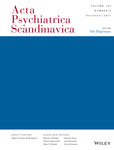Treatment of Early-Onset Specified and Unspecified Bipolar Disorders: A Systematic Review and Strategies for Identifying and Managing a Thermally Dysregulated Subtype in Children
Abstract
Introduction
Bipolar disorder (BD), characterized by extreme mood shifts between mania and depression, can manifest in childhood, and pose treatment challenges. Treatment for full-criteria BD I or II in children has been partially described in the literature, but major uncertainties exist regarding non-classic presentations, which were originally designated as bipolar “not otherwise specified” (BP-NOS) in DSM-IV and in DSM-5 and ICD-11 as either other specified or unspecified BD (S-USBD). This review aims to provide literature-based recommendations on the treatment of S-USBD, with a focus on a fear of harm (FOH) subtype, now termed temperature and sleep dysregulation disorder (TSDD).
Methods
A broad systematic literature review with AI assistance was conducted to identify all articles in PubMed providing data on the treatment of children with either atypical BD, BD-NOS, USBD, specified BD, rapid cycling BD, or a phenotype of BD.
Aims
Given the paucity of pharmacological treatment literature on any of the earliest forms of BD prior to their achieving a BP I or BP II diagnosis, it was felt that there was a critical need to review the existent literature on the earliest presentations and prodromes, which now fall under the rubric of specified (BD S-USBD). Here, the focus is on the prevalent BP-NOS subtype, which meets all the classical presentations of BP except for the brief durations of mania, and a more newly recognized form of S-USBD called TSDD.
Results
Eleven family-focused psychotherapy studies were identified, including nine randomized controlled trials (RCTs) with uniformly positive results versus the comparative group, which was treatment as usual (TAU) for unclear subtypes and subtypes of S-USBD. Only three psychopharmacological RCTS were reported, and only one on aripiprazole in unspecified subtypes of S-USBD in high-risk children showed a significant difference from placebo. None of the controlled trials and only two case series provided separate outcome data on the S-USBD subtypes, except for one that focused exclusively on the TSDD subtype. These two case series reports preliminarily defined the TSDD subtype and provided novel pharmacological treatment data, including lithium, clonidine, and ketamine, which led to good outcomes.
Conclusion
Good support was provided in the 11 studies for the use of adjunctive family-focused psychotherapeutic approaches, and this approach should be considered an important part of any treatment regimen. The pharmacological treatment landscape for S-USBD lacks a systematic research base, warranting further exploration with controlled clinical trials. Case series indicate promising treatment outcomes for TSDD with high-dose lithium, clonidine, ketamine, and other cooling measures. Validation of this novel treatment strategy in controlled trials is needed to advance the management of the S-USBD variants.


 求助内容:
求助内容: 应助结果提醒方式:
应助结果提醒方式:


